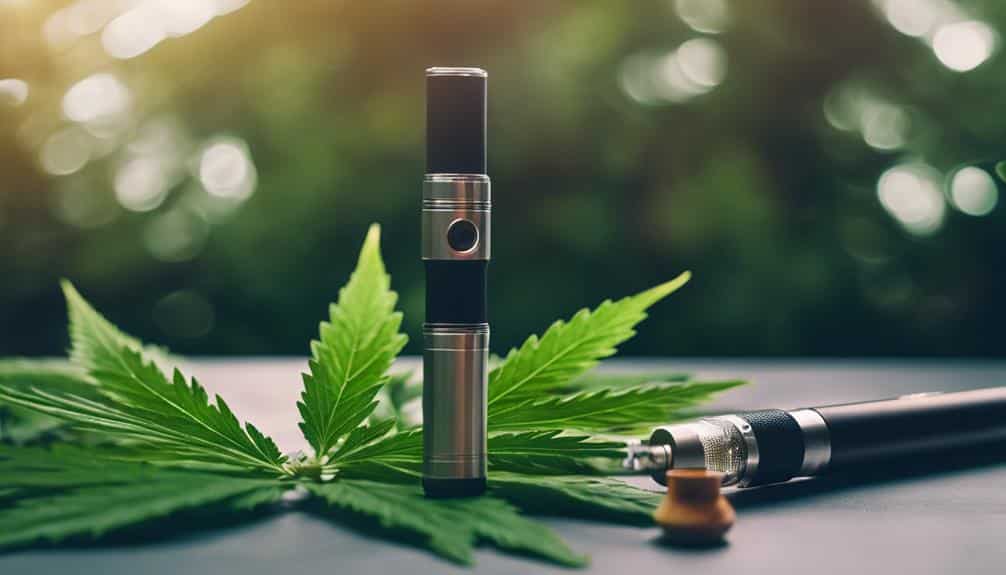Navigating the complex landscape of cannabis consumption can often feel like exploring a labyrinth filled with countless turns. You’ve likely heard about vaping and smoking, but how do they compare? Which method is safer, more enjoyable, or more efficient?
In the following sections, we’ll examine the pros, cons, and health impacts of both methods to equip you with the knowledge you need. However, remember that we still have plenty to unpack; solving this maze isn’t as straightforward as it seems.
Understanding Cannabis Consumption

Before diving into the comparison between vaping and smoking, it’s essential to understand the basics of cannabis consumption. This includes its effects and various available methods. Cannabis doesn’t just come in a smokable form; there are several ways to consume it—each with its own set of advantages and drawbacks.
‘Cannabis Edibles,’ for instance, are food products containing cannabinoids—the active compounds in cannabis. They offer a discreet and long-lasting method of consumption. However, their effects take longer to kick in, making it easy to consume too much due to delayed onset.
Then there are ‘Topical Applications.’ These include creams, lotions, and oils infused with cannabis that are applied directly onto the skin. They’re known for their potential therapeutic benefits—particularly for pain and inflammation—without causing psychoactive effects associated with other consumption methods.
Health Impacts of Smoking Cannabis
Smoking cannabis is often perceived as the most traditional method of consumption. However, it’s important to be aware of its potential health impacts. While it may offer relief from chronic pain or anxiety, it’s also linked to several health risks.
The most apparent risk is cannabis addiction. According to the National Institute on Drug Abuse, about 9% of cannabis users become dependent—a risk that increases to about 17% when use starts during adolescence.
Beyond addiction, smoking cannabis isn’t without physical consequences. It can lead to respiratory issues similar to those caused by tobacco—such as chronic bronchitis and lung infections.
Adding secondhand smoke effects into the equation further complicates matters. While research is ongoing, some studies suggest that non-smokers exposed to secondhand cannabis smoke can experience similar effects as direct users—posing a risk to bystanders, particularly children and people with respiratory conditions.
It’s crucial to weigh these risks against the potential benefits of cannabis use. If you’re considering using cannabis, make sure you discuss with healthcare professionals first—to ensure you’re making informed decisions about your health and those around you.
Pros and Cons of Vaping Cannabis

When considering the health impacts of smoking cannabis, it’s also essential to explore vaping—an increasingly popular method of consumption. Advancements in vaping technology have not only made it a more convenient way to consume cannabis but also a more controlled one.
You can adjust the temperature to avoid combustion and unwanted toxins, potentially reducing health risks associated with smoking.
Moreover, vaping can provide an enhanced experience regarding cannabis flavor profiles. The controlled temperature settings allow you to truly appreciate the diverse flavors by not burning them off—as is often the case with smoking.
However, there are downsides to vaping. While it’s perceived as a safer method, long-term health impacts are still uncertain due to its relative novelty. Also, the initial cost of purchasing a quality vaporizer can be quite steep compared to traditional smoking methods.
Lastly, despite advancements in technology, cheaply made vaporizers can still pose potential health risks due to low-quality components or improper heat regulation.
Scientific Studies on Vaping Vs. Smoking
To understand the relative health impacts of vaping versus smoking cannabis, let’s delve into recent scientific studies’ findings. Over the years, there has been a surge in vaping technology advancements that have made it a preferred choice for many users. Vaping is lauded for its reduced harmful effects compared to traditional smoking—a study published in the Journal of Cannabis Therapeutics found that vaporized cannabis is less likely to cause respiratory problems than smoked cannabis.
Now let’s consider research on addiction. Studies have shown that smoking tends to be more addictive than vaping. According to the National Institute on Drug Abuse, nicotine in smoked cannabis can lead to addiction—making it harder for users to quit. This isn’t suggesting that vaping isn’t addictive; however, its dependency rate tends to be lower.
In terms of potency—a study published in JAMA Psychiatry found that vaporizing cannabis produces more potent effects than smoking—potentially leading inexperienced users towards overconsumption risk.
As you guide others towards making informed decisions, it’s crucial to stay updated on these studies. They offer key insights into the ongoing debate between vaping and smoking cannabis.
Making an Informed Choice: Vaping or Smoking?

When choosing between vaping and smoking cannabis, it’s essential that you’re informed about each method’s pros and cons—considering factors such as health risks, addiction potential, and potency. Your decision should be guided by a comprehensive understanding of the following elements:
- Health Risks: Vaping is generally considered less harmful than smoking because it involves heating cannabis instead of burning it—reducing the number of harmful chemicals you inhale.
- Addiction Potential: Both methods can lead to addiction—depending on the frequency and amount of cannabis consumed.
- Potency: Vaping can provide a more potent experience due to its efficient extraction of THC—the psychoactive compound in cannabis.
- Cannabis Legislation: Always consider your region’s legalities surrounding cannabis use.
Your personal preferences also play a significant role. If you prefer a less harsh and more flavorful experience, vaping might be your best bet. However, if you’re after the traditional robust experience of cannabis, smoking might appeal more to you. Regardless of your choice, remember that responsible use is key to mitigating potential health risks and legal issues. Make your choice wisely—considering both the scientific evidence and your personal preferences.
Conclusion
Ironically, while you might have started reading this article seeking a clear-cut answer, there’s no one-size-fits-all solution. Research suggests vaping might be less harmful than smoking, but it isn’t risk-free. The choice between vaping and smoking boils down to your personal preferences and health priorities. But remember, being informed is your best weapon in this smoky battlefield. So keep exploring, questioning, and choosing wisely—your lungs will thank you later.
As your guide in this journey, I want to extend a friendly invitation to visit us at Fells Point Cannabis Docs of Maryland. We’re here to answer your questions and provide expert advice on all things cannabis-related. Whether you’re curious about vaping, smoking or other forms of consumption—our team is eager to help you navigate through the ins and outs of cannabis use. Don’t hesitate to give us a call—we look forward to meeting you and assisting you in making the best decisions for your health.
